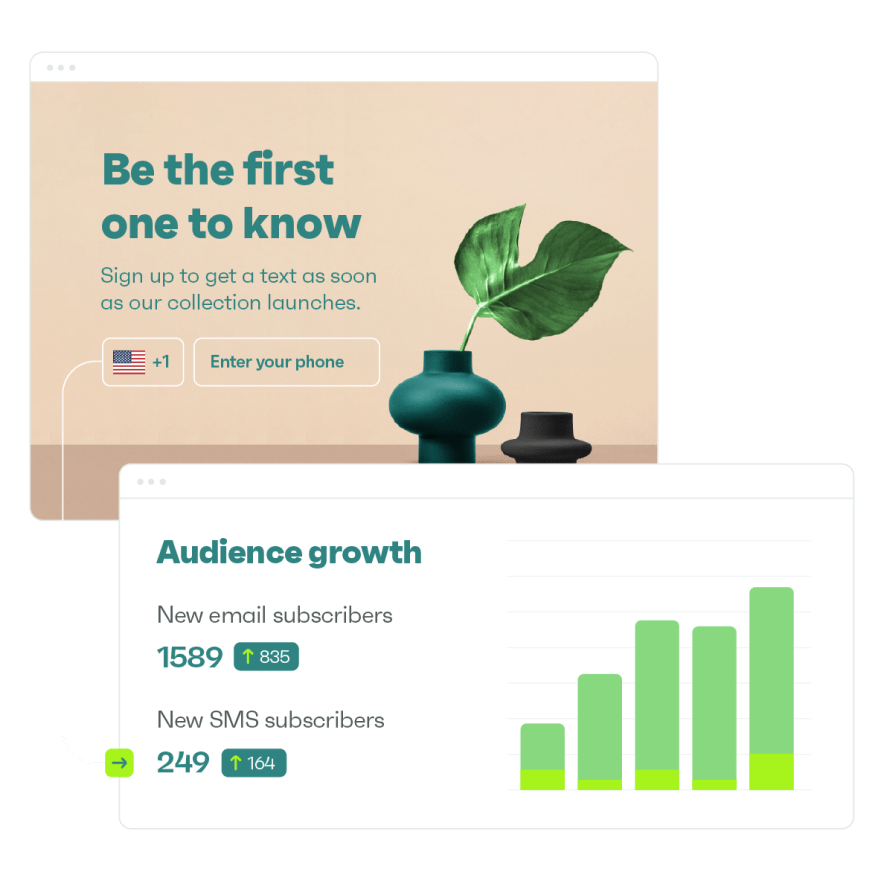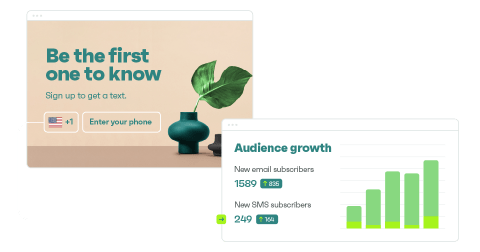Drive sales on autopilot with ecommerce-focused features
See FeaturesMultichannel selling: explanation, tips, and strategies for 2024
Many marketers believe that multichannel selling is only for big retailers and that small retailers can’t afford it.
It’s not true.
Selling on multiple channels need not cost a fortune if you do it right. In fact, selling on multiple channels should bring in more value than the cost you’ll incur on setting up those retail channels.
So how can you effectively incorporate multichannel commerce into your strategy?
Keep reading, because in this article, you’ll find the benefits and challenges of multichannel selling, along with tips on how to do it right.
But first, let’s start with the basics.
What is multichannel selling?
As the name suggests, multichannel selling refers to the process of selling products or services through multiple retail channels. These can be your website, social media, affiliate sites, and online marketplaces, or physical sales channels, such as retail stores and marketplaces like farmers’ markets, trade events, and craft fairs.
This is different from omnichannel selling, which deals with a specific type of multichannel selling strategy that provides a seamless customer experience across channels.
Another important difference between omnichannel vs multichannel selling is with the former, you need to ensure that customers can continue their buying journey across channels, without any hassle.
Wondering who should be using multichannel selling?
Any business in today’s digital world should be utilizing multiple sales channels instead of relying only on their websites.
Main channels for multichannel selling
You can use a variety of physical and digital channels for your multichannel sales strategy. In this section, we’ll explore some of the most important ones.
Physical stores
If you’re selling physical products, then having a physical store can help you attract local customers. However, you would need to open multiple stores if you want to target multiple geographies, which is expensive.
You can opt for a pop-up store model where you set up temporary stores at specific events and fairs. This costs less and still gives you some sort of physical presence in your target geographies.
Your website
This is often the primary retail channel for most businesses targeting multiple locations as it’s much cheaper than opening physical stores. Invest in an SEO-friendly website and optimize your checkout process to make it a profitable sales channel.
Also, don’t forget to optimize your website for conversions by creating optimized product pages. Using a good ecommerce-specific website builder can help you with that.
You should also use multichannel marketing to direct traffic to your site from multiple sources.
Online marketplaces
These are online multi-vendor marketplaces where multiple sellers can sell their products, such as Amazon or eBay.
Check out this snapshot from Amazon where multiple sellers have listed their products:
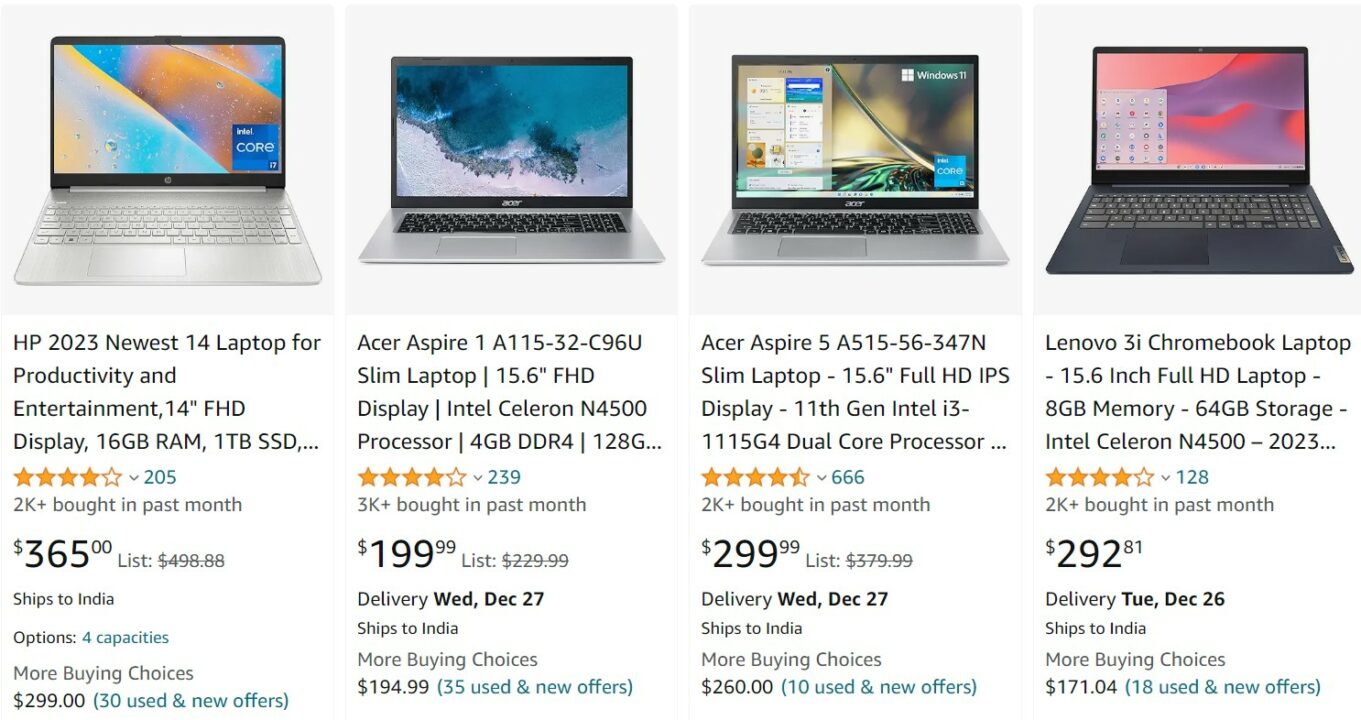
Social media
Social media has emerged as an effective sales channel, with people spending an average of 2.5 hours per day on it. Visual platforms like Instagram are especially popular among retailers as they can create aesthetic virtual shops that show off the products.
Check out how Cluse has created a virtual product catalog on its Instagram account:

Best of all, many platforms allow users to shop directly. This makes buying from these platforms extremely convenient for users, which results in more conversions for retailers.
Comparison websites
Comparison sites, like Google Shopping or Shopzilla, are another of the multiple sales channels you can use to sell your products. Such sites give customers an option to browse similar products and choose the ones they like.
Affiliate websites
You can also start an affiliate program for your ecommerce store and let affiliates promote your products for a small commission. This allows you to expand your reach and generate brand awareness as your affiliates will promote your brand to their audiences.
Multichannel selling advantages
You may be thinking that a multichannel sales strategy sounds complicated and like a lot of extra work. But this doesn’t have to be the case, and there are numerous benefits to it. Let’s take a look at some of them.
Expanded reach and customer base
The biggest advantage of multichannel commerce is that you can reach a much larger audience than you could ever reach from just one sales channel.
By selling on multiple sales channels, you can also target different audience segments that are active on different platforms.
For example, some people would automatically go to Amazon for their day-to-day shopping needs. These customers would probably never discover your brand or website elsewhere.
Similarly, many people turn to social media for finding new brands or products and if you’re not there you’re missing out on a huge opportunity.
In fact, according to Statista, 77% of consumers use social media to discover new brands or products.
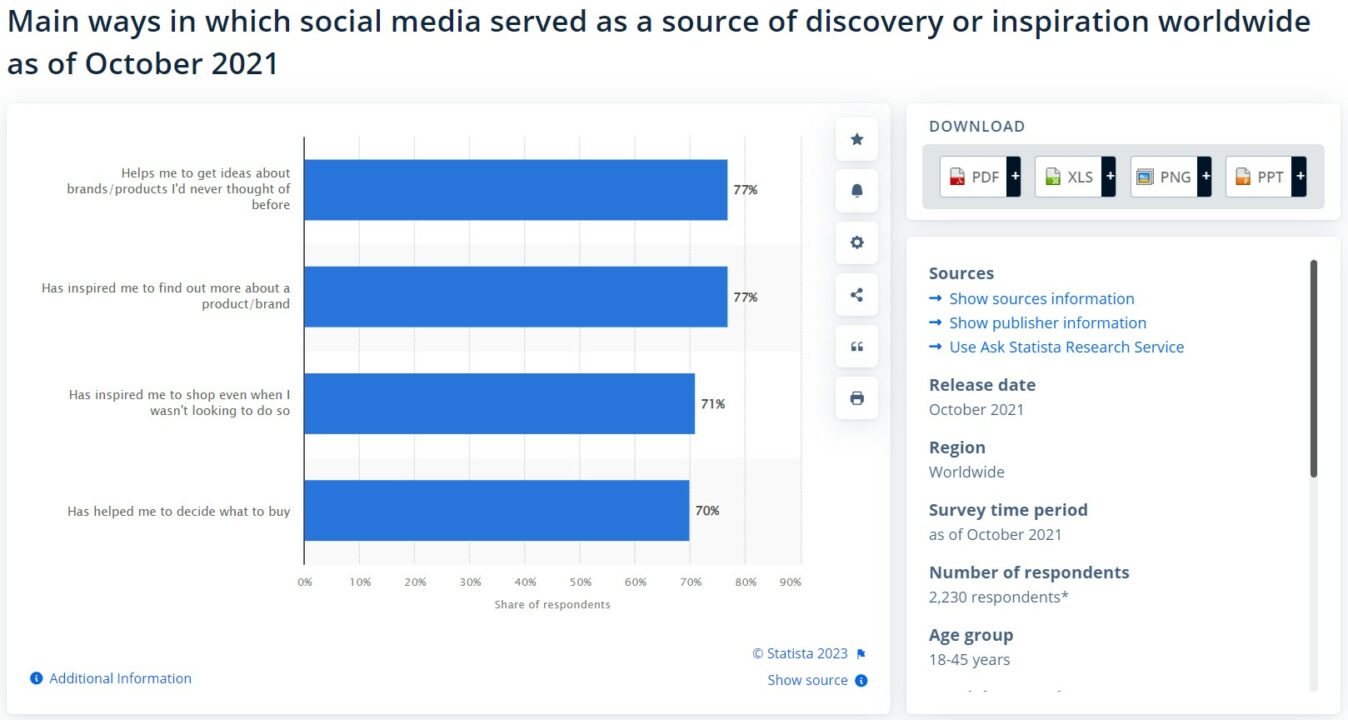
More sales opportunities
As previously mentioned, selling on multiple platforms allows you to reach a larger audience, which means more sales opportunities for your business.
By being active on multiple platforms, you can stay top of mind for consumers and create multiple touchpoints to attract potential customers.
Reduced risk
Selling only through one channel is similar to the “putting all your eggs in one basket” adage. By diversifying your retail channels you also reduce your risk.
For example, if you primarily sell on one social media channel, you can’t make any sales if that platform goes down for any period of time.
Likewise, if you rely on organic search traffic and are affected by a Google update it can be detrimental to your business.
Even though both instances may be temporary, they can have a significant impact on your bottom line.
More cross-promotional opportunities
Multichannel selling also presents the opportunity for multichannel marketing, by using the different platforms to direct visitors to your other channels.
For example, your website may host your store, and your marketing channels, such as social media, can send leads to it.
You can increase engagement and sales further by using a dedicated tool. Omnisend, for example, offers email, global SMS, and web push notifications to send relevant messages to your audience.
The main challenges of multichannel selling
While there are numerous benefits of multichannel marketing, it comes with certain challenges as well. Let’s discuss some of the most notable ones.
Choosing the right channels
The trick to succeed with multichannel selling is choosing a few channels and utilizing them successfully. You don’t want to stretch yourself too thin by trying to sell on all possible channels.
However, choosing the right channels can be difficult, as you’ll need to identify the ones most likely to reach your audience.
Here are some top sales channels you can choose from.
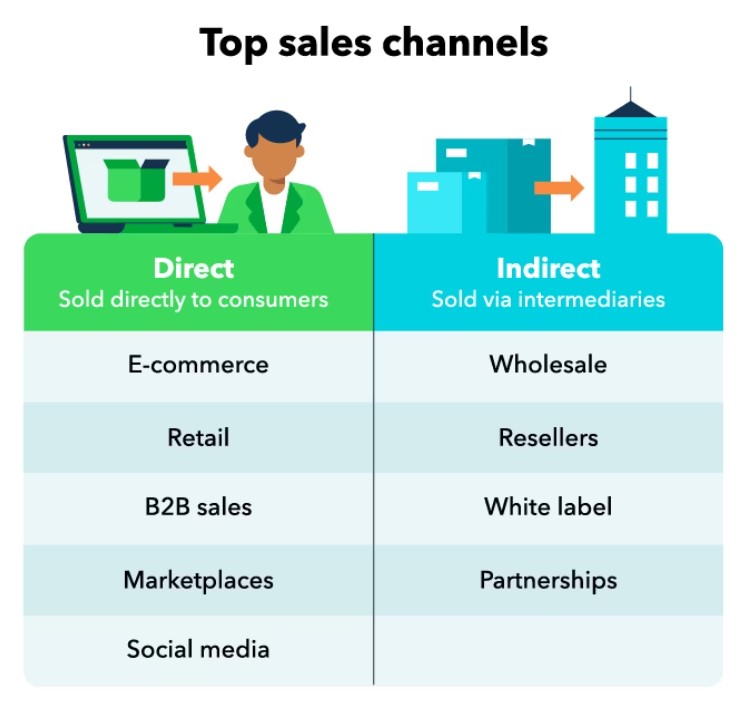
Your choice of channels should depend on:
- Target audience: Choose sales channels where your target customers are active.
- Reach: Adding a new sales channel is a significant investment in terms of time, effort, and potentially money. So, make sure you opt for channels that can help you reach a considerable number of the right people.
- Competition: If a channel is oversaturated with brands offering products similar to yours, you may struggle to stand out. At the same time, if you notice there are no competitors on a particular platform, that might indicate you’ll struggle to make sales there. You need to find the right balance so you can realistically attract and engage your target customers.
Channel management
Multichannel management is no easy task. You need to manage inventory and provide the best fulfillment options for each channel. You’ll also need to scale your team and create separate processes for each channel, which can be a challenge.
On top of that, you must keep accurate and consistent product information on all channels. Any inconsistencies may cause confusion and loss of trust in prospective customers.
Omnichannel marketing
Multichannel marketing deals with selling on multiple channels. But to provide a great customer experience, you need to utilize omnichannel marketing as the customer-centric model ensures a smooth experience for your buyers.
Here’s an illustration showing the difference between multichannel and omnichannel marketing:
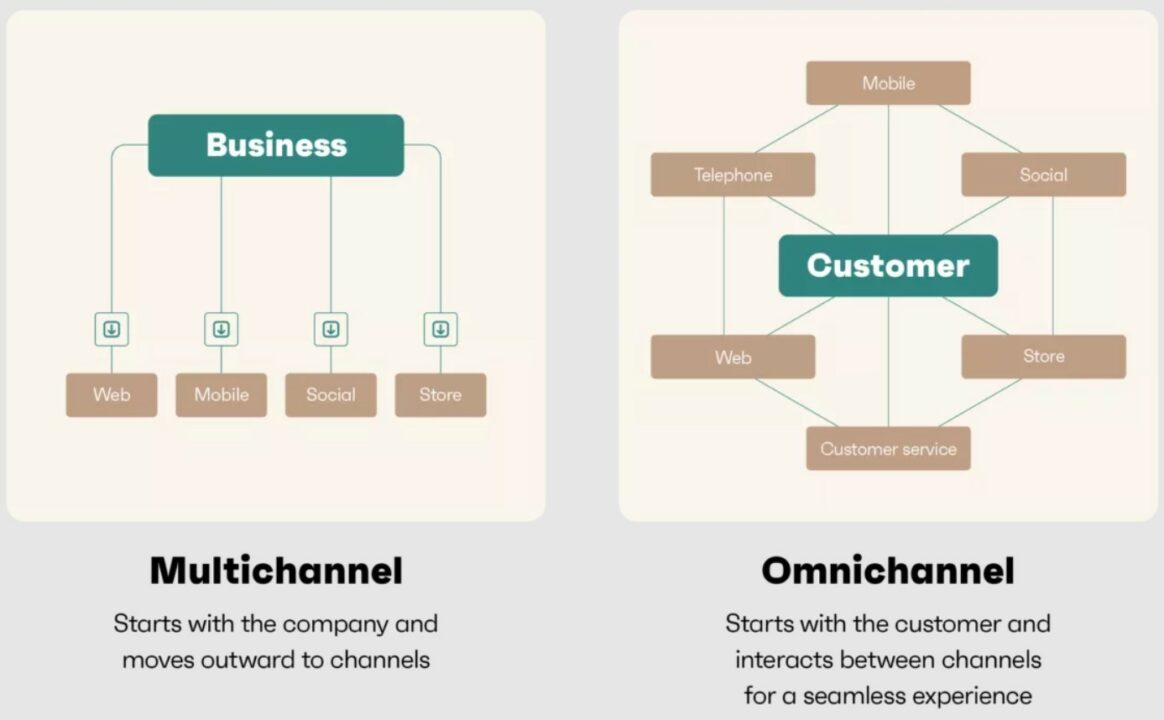
A customer may start shopping on their phones, for example, and complete the purchase on their desktop computer. In this case, the cart should have prefetched details of all the products they added.
Essentially, the transition from one channel to another should be seamless.
Email and SMS marketing software like Omnisend can help you connect with prospects on multiple channels while providing a consistent experience. You can use it to run integrated marketing campaigns with email, SMS, and push notifications.
5 tips for multichannel selling
As we’ve shown, multichannel selling is not easy and you may face challenges that cause it to be ineffective. That’s why we’ve made a list of tips and tricks to help you succeed with multichannel selling.
Research every channel individually
Treat every channel as equally important and do thorough research to craft the best strategy for each channel. What works on one channel may not work on another.
Conduct research and answer these questions for each channel:
- Which target customer segment are you trying to reach on this channel?
- What products or services are they most interested in?
- Who are your competitors and what are they doing on that channel?
- Which payment and shipping options can you provide?
- What customer service options will you provide?
- What is your plan for inventory management and product listings on this channel?
Know your customer
For your multichannel sales strategy to be successful, you need to be very clear on who your target customers are on each channel.
You’ll need good analytics tools to gain insights into the customer demographics and behaviors on each channel. Use them to identify and define your target audience for each channel and tailor your strategy to best attract and engage with them.
Optimize for mobile
As of Q1 2023, mobile accounted for 58.3% of online traffic. In fact, the share of mobile traffic has consistently been above 50% since 2017:
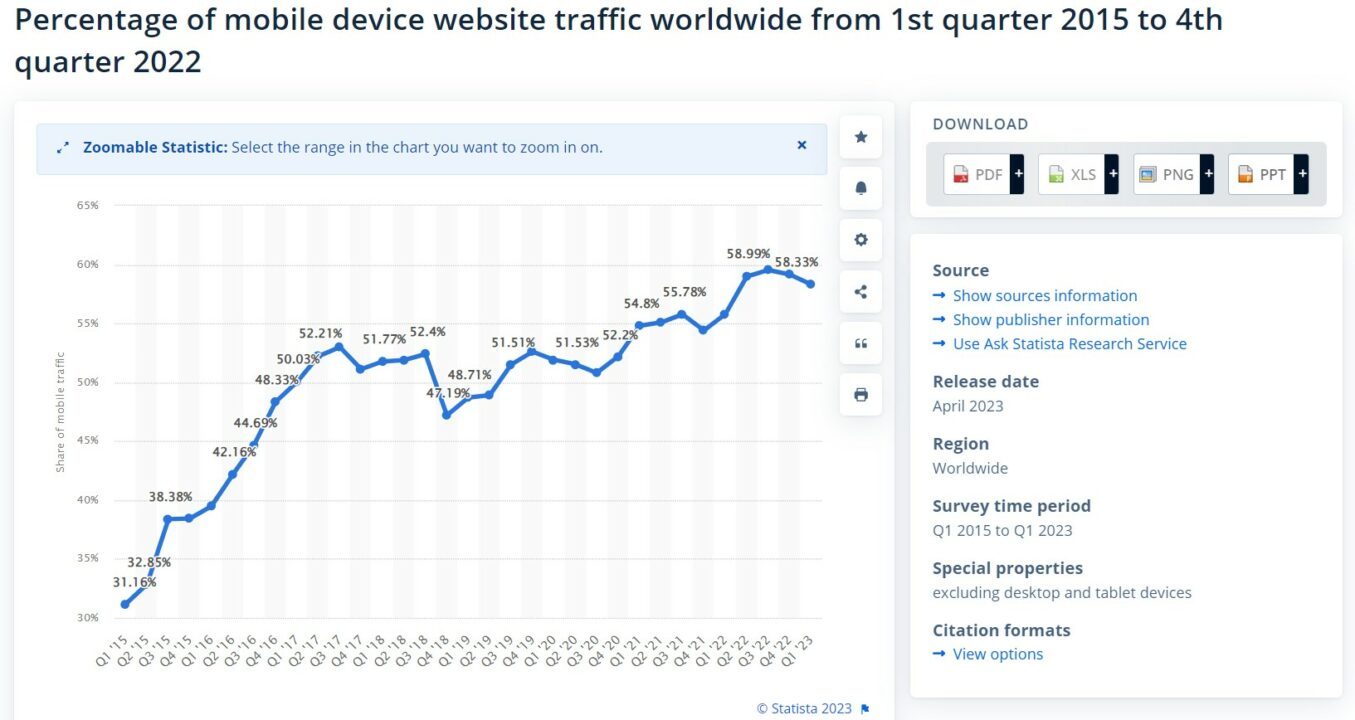
Furthermore, the mobile commerce market size was $507.3 billion in 2022 and is forecasted to grow at a CAGR of 25% during 2023-2032.
Clearly, you can’t ignore mobile shoppers anymore and need to have a clear strategy to target them.
Here are a few tips to get you started:
- Adopt a mobile-first approach for your website
- Make sure images, buttons, and text sizes are appropriate for viewing on smaller screens
- Include mobile payment options, such as PayPal and Apple Pay
- Keep your store design simple and easy to navigate
- Regularly check page speeds and optimize slow-loading pages
- Keep the checkout process as short and simple as possible
If you’re using social media for selling, then you should utilize each platform’s integrated shopping features and allow shopping directly from it.
This makes shopping easier for mobile shoppers as they can quickly shop from their social media accounts without needing to visit your website.
Here’s an example from Daniel Wellington, a watch brand that effectively uses this feature:
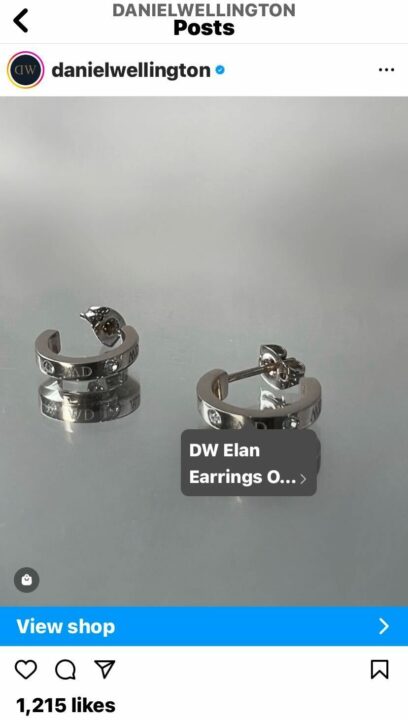
Stay consistent
Consistency is key to delivering exceptional customer experiences on all your sales channels.
This involves consistency in brand voice, tone, product descriptions, and pricing.
Let’s cover some of these in detail.
- Product listings: Make sure your product descriptions, pictures, and other relevant information are consistent on all channels. Use a Product Information Management system (PIM) to create and manage accurate and consistent product listings across channels.
- Product prices: It’s extremely important that you don’t mistakenly list different prices for the same product on multiple channels. This will breed mistrust and will lead to dissatisfied customers. So, pay special attention to this when managing your product listings across platforms.
- Brand voice and tone: Maintaining a consistent tone and voice helps build and strengthen your brand identity. Keep your retail marketing messaging consistent and follow the same branding guidelines across platforms to build a unique and distinct brand image.
- Customer service: If you’re using multiple sales channels, you also need to provide customer service through all your channels. If a customer chooses to share their grievance via social media, you can’t ignore it and respond only to queries made via proper support channels. Make sure you promptly address customer queries consistently on all channels.
While it’s important to create a separate channel strategy, it needs to be in alignment with your overall brand strategy. Customers should be able to get the same shopping and service experience, irrespective of the channel they choose to interact with your brand.
Anchor your channels with email marketing
No matter which or how many sales channels you have, email marketing can help you promote your store on each channel and get more traffic.
From abandoned cart reminders to personalized product recommendations, targeted emails can help you nurture leads and drive more purchases. But for that to work, you must use the right CTAs and link to the specific product pages for which you want to drive conversions.
Email marketing automation software like Omnisend can help with that. Its product picker feature allows you to add specific products to your emails, directly from your store. You can also recommend specific products to each user based on their past purchases or browsing history and provide a direct shopping list.
Want to know the best part?
You can send mass emails and still ensure personalization with Omnisend’s advanced targeting and personalization options.
Wrap up
Multichannel marketing is no longer an option but a necessity for businesses. If you want to expand your reach and target specific customer segments effectively, you must leverage multiple sales channels.
However, it does come with its own set of challenges.
Use this guide to learn some tips and best practices to use multichannel selling effectively and get the best results.
Need help running omnichannel marketing campaigns to support your multichannel sales strategy? Use Omnisend to run integrated SMS and email campaigns to drive traffic to all of your sales channels.
quick links
related features
No fluff, no spam, no corporate filler. Just a friendly letter, twice a month.
